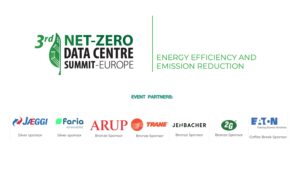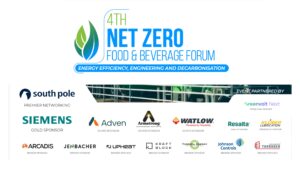That huge CapEx investment for your new smart factory? It could be your greatest competitive threat, not your most valuable asset. Our sector has tracked progress for decades in terms of the size of its capital expenditure. But that old playbook is innately out of step with the pace of Pharma 4.0. It mandates a fixed, all-or-nothing mentality in a world that now requires ceaseless agility. This article overturns that outdated model. It offers a new vision for constructing the factory of the future: one that redirects emphasis from ownership of depreciating assets to the purchase of assured results.
The €100M Illusion: Why Pharma’s Old Investment Model is a Trap
The traditional approach of upgrading your manufacturing facilities is filled with strategic dead ends. You pour millions into new technology, but the assured returns are always over the horizon. So, let’s take a look at why this old model is a massive liability for any company that is focused on Pharma 4.0:
Is Your 5-Year Tech Plan Obsolete the Day You Sign the Cheque?
Think about this scenario: a major pharma company went through a three-year, facility-wide rollout of a new MES, i.e., Manufacturing Execution System. By the time the final line gets validation, the core software is already at least two versions behind what new market entrants are installing. This stands to be the reality of the pharma 4.0 capex vs opex model if we only highlight the capital expenditure. Furthermore, technology in the Pharma 4.0 space, in particular AI & IOT, finds evolution in months, not years. So, when you commit to massive manufacturing Capex, you are basically locking yourself in a snapshot of technology. Moreover, a more flexible approach is important when calculating ROI for smart factory investments. The goalposts are constantly moving nowadays, making long-term commitments to technology a risky business.
The Hidden GMP ‘Validation Tax’ That Doubles the Cost of Your New AI
Here we talk about a situation that vendors rarely discuss. A well-reputed European biotech firm put its €2 million into a recent AI process control system. The vendor gave assurance of a quick rollout. However, the Good Manufacturing Practice validation, which involves documenting each algorithm decision tree & proving its reliability under several test conditions to regulators, took 18 more months and cost another €2.5 million in consulting/ internal resources. This stands to be the GMP ‘validation tax’ in motion. It is mandatory and also a non-negotiable part of our industry. So, it can easily make the initial investment almost double. Additionally, it can derail your projected smart factory ROI and make you doubt: Is Pharma 4.0 worth the investment or not?
How Legacy Systems Hold Your EMA Compliance Data Hostage
Your current systems, the bioreactors/filling lines/packaging equipment, reflect an absolute goldmine of data. The issue is, they don’t speak the same language. Furthermore, this makes up for data silos that stand to be a nightmare when it comes to compliance. Assume an EMA auditor asks for the complete history of a single batch, right from raw material to the final shipment. You might have to pull the data manually from a dozen systems that are incompatible, hoping you do not miss anything. A unified path to Pharma 4.0 breaks these silos down. It isn’t just about efficiency; it stands to be a major part of maintaining your license to operate and ensuring data integrity. (If these topics are something you want to deep dive in, read till the end)
Leasing vs. Owning: Why Your Rivals Are Innovating Faster
You are navigating the lengthy budget approval system for a major manufacturing Capex investment, and your agile competitors are already using new technology. How can that be? Well, they are shifting their perspective from owning to accessing. Through partnerships with technology providers on a subscription/lease basis, they can use the latest innovations. That too, without the crippling upfront cost. Moreover, this gives them a way to learn/experiment/scale at a much faster pace. This speed & agility in the path to Pharma 4.0 gives a decisive competitive advantage. The traditional pharma 4.0 capex vs opex model simply can’t match this.
The Pay-per-Value Revolution: A New C-Suite Playbook for Tech ROI
As we saw, the old model can be a trap, so what’s the route to escape? The solution is in a total shift in how we see technology investment. Rather than buying assets, one should buy outcomes. So, let us go through how the pay-per-value can change your approach to getting to a genuine smart factory ROI:
From Fixed Costs to ‘Pay-Per-Batch’: Aligning Tech Spend Directly with Revenue
This concept works in the real world in such a manner: a contract manufacturing organization in, let’s say, Ireland, needs to expand its chromatography capacity. Rather than buying a new €5 million skid, they partner with a vendor on a “pay-per-batch’ model. The vendor installs/maintains the equipment, and CMO pays the decided fee with each successful batch aligning with the quality specifications. Moreover, this classic Pharmaceutical Opex moves the risk of equipment downtime from CMO directly to the vendor and makes a huge capital outlay into a predictive/ variable cost. It also stands to be a smart way to reduce capital expenditure in pharmaceutical manufacturing.
How ‘As-a-Service’ Tech Unlocks Data for Europe’s New ESG Mandates
ESG or Environmental, Social, & Governance reporting in today’s time is a board-level situation in Europe. Certain regulations, such as the Corporate Sustainability Reporting Directive, need data that is auditable and in detail. This covers everything from energy use to water usage. Gathering this data manually stands to be a daunting task. However, an “as-a-service” network, subscribed with a monthly fee, can give a real-time, auditable data stream on:
- HVAC optimization,
- Water efficiency, and
- Carbon accounting
As a result, it makes reporting simple and turns a compliance burden into a strategic advantage. (If you want more strategies like this, it is a key theme of the 4th Net-Zero Life Sciences Forum; more about it later.)
Modular & Scalable: Adding New Manufacturing Capabilities in Weeks, Not Years
The era of monolithic/multi-year tech overhauls is gone. The future stands to be modular. For instance, A major European pharmaceutical company wanted to improve its process of visual inspection. Rather than replacing the whole line, they made use of an AI-powered inspection module. That too, on a subscription basis. The pilot was up & running in six weeks! After proving over 30% reduction in false rejections, they gave scale to the solution across five other lines within six months. So, this is the power of a Pharmaceutical opex strategy. Additionally, it gives way for you to make targeted improvements and see a real smart factory ROI almost instantly.
From In-House Patches to Vendor-Guaranteed Security: A New Model for System Resilience
When you buy technology, you also bring the unending responsibility for its maintenance, and especially cybersecurity. Furthermore, your teams have the burden of constant patching/upgrades and defending against complex cyber threats. Subscribing to a GxP-compliant cloud platform shifts a major portion of the risk. The vendor, who is a specialist in their domain, is contractually in an obligation to give security/uptime/disaster recovery. Additionally, this allows your internal experts to put their focus on process innovation instead of IT maintenance. So, this changes your risk profile and also ensures a more resilient operation (This is a major part of Pharma 4.0 strategy)
Your Opex Action Plan: The First 100 Days and Beyond
Now we come to the section where we trade the old, risky model for a smarter/agile approach to Pharma 4.0. It stands to be more achievable than professionals perceive it to be. So, let’s go through a practical/no-fluff guide to get revolutionary firms like yours started:
Action 1: Redeploying Your Top Engineering Talent from Maintenance to Innovation
Your most valuable engineers or the professionals who have deep knowledge of the process are likely to spend over 70% of their time on low-value/defensive tasks. This includes:
- Validating routine software patches,
- Managing server uptime,
- And generating maintenance reports to keep existing systems running
An opex model, where the vendor contractually assumes this burden, liberates this talent. So, the first action is to redeploy this brainpower. Furthermore, rather than hoping that they innovate, make a structured “ innovation time quota.” It should be ordered that 40% of the process engineering’s time is allocated to projects that are of high value. As a result, this means shifting them from validating a vendor’s patch to making a predictive maintenance algorithm for a bioreactor. This directly impacts your smart factory ROI.
Action 2: Building a ‘Technology Value Scorecard’ to Replace Traditional Capex Budgeting
Traditional financing models, such as Net Present Value, are essentially broken for evaluating modern technology. They cannot assign a financial value to agility/reduction of risks. So, your second action is to make a new financial tool that guides investment: “technology value scorecard.” This scorecard needs to evaluate the potential Opex projects across four different quadrants:
- Financial Impact (the expected Opex vs. the retired Capex),
- Regulatory Velocity (a score on how quickly the solution can adapt to new EMA guidelines),
- Risk Transfer Value (a calculated financial value of the cybersecurity & maintenance burdens now shouldered by the vendor), and
- Scalability Index (a score for the ease and cost of scaling from one line to ten).
Additionally, this is how you begin calculating ROI for smart factory investments in an accurate manner in the current times.
Action 3: Launching a ‘Partner Innovation Council’ to Co-Develop Your Technology Roadmap
When it comes to the Opex model, the success of the vendor is linked to your continuous subscription. This makes them a vested partner. Moreover, your third action is to formalize this synergy. This can be done with the creation of a partner innovation council. It doesn’t stand to be a typical sales meeting; it is a quarterly strategic summit. Your attendees: Head of Engineering, Head of Quality, & Head of Digital will meet the vendor’s Chief Product Officer & Head of GxP Compliance. The agenda will be absolutely clear: you show your upcoming challenges in manufacturing, let’s say, handling batch records for a new cell therapy, and the vendor shows their development roadmap. Additionally, this method is allowing some of the brightest Pharmaceutical companies to co-develop a new module for personalized medicine six months ahead of their competitors. So, it is a true win for the Pharma 4.0 strategy.
Action 4: Using Real-Time Opex Data to ‘Pre-Comply’ with Future EMA Regulations
The majority of companies make use of data to reactively prove past compliance. The absolute competitive advantage is making use of data to proactively prepare for future rules. So, your fourth action is to use the rich data streams from your new “as-a-service” platforms to pre-comply with the coming regulations. For example, the industry is aware that the EMA is going toward strict Continuous Process Verification (CPV) standards. Making use of a digital twin that is fed by real-time data from your Opex sensors can allow you to simulate your process against the even tougher statistical limits of a future CPV guideline. Additionally, this gives way for you to identify & fix potential deviations today itself. It also ensures that when new rules become non-negotiable, you are already in compliance while your competitors are scrambling.
To Sum Up
The journey to Pharma 4.0 is not limited to a single/massive investment. It is rather about making a culture that reflects continuous/agile innovation. Through a shift in mindset from old & risky capital expenditure model to a value-driven operational expenditure approach, you can unlock an insane level of performance & competitiveness. Moreover, you can minimize capital spending in pharmaceutical manufacturing while speeding up the adoption of technologies simultaneously.
Now, remember how we told you to read till the end if you want to learn about more strategies, case studies, etc.? This is where we talk about the most talked-about event for pharmaceutical companies and medical device manufacturers. The 4th Net-Zero Life Sciences Forum in Düsseldorf, Germany, this 4-5 November 2025, is where skilled professionals like you need to be. The event stands to focus on practical strategies/insights through sessions, panel discussions & more, along with insane networking opportunities with the top companies that are leading. Learn more!




